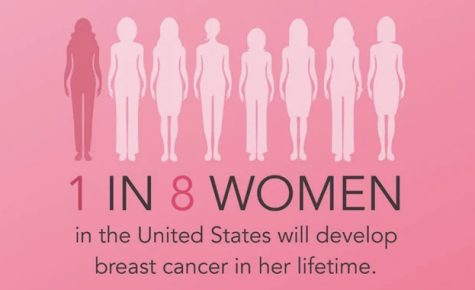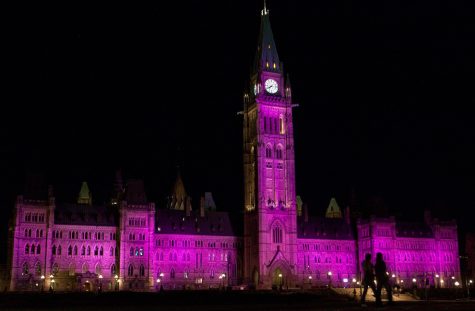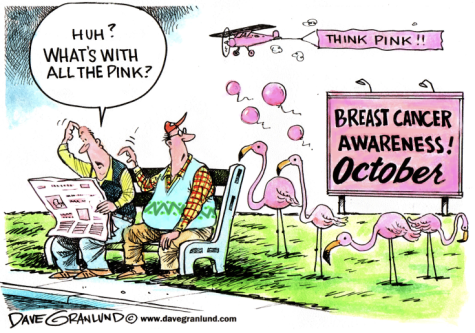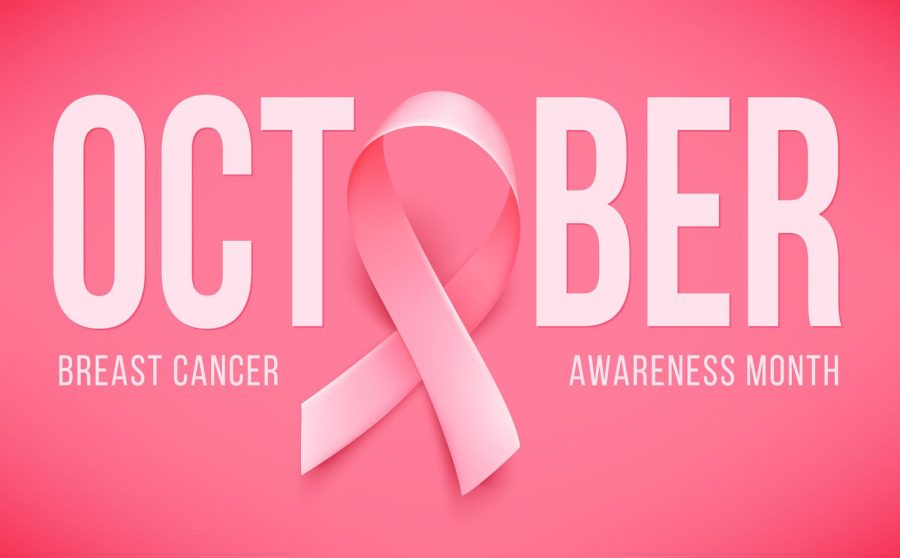Pinktober: Breast Cancer Awareness Month
October 28, 2022
Pink, a vibrant yet delicate color, is one we associate with great joy, happiness, and pleasure. It is a color we associate with cotton candy and sweetness. It is a color we associate with fragrant bouquets of flowers. The color pink, however, is also an important symbol of breast cancer, a terrible disease that affects far too many individuals every year.
For almost four decades, the United States has flaunted the pink ribbon throughout  the month of October in recognition of breast cancer awareness. Individuals come together to promote the importance of screening and prevention against this dreadful disease that affects over two million women worldwide every year.
the month of October in recognition of breast cancer awareness. Individuals come together to promote the importance of screening and prevention against this dreadful disease that affects over two million women worldwide every year.
Despite its current popular influence today, this movement started out small. In 1992, cosmetics company Estée Lauder launched a campaign to promote breast cancer awareness.  They distributed pink ribbons with a card explaining how to complete an effective breast self-exam at their makeup counters nationwide. In that year alone, the company distributed more than 1.5 million ribbons as well as petitions for the White House to boost funding for breast cancer research. Just a few years later, in 2000, Estée Lauder initiated the Global Illumination Project, intended to raise awareness for breast cancer by illuminating major global landmarks with a pink light during the month of October.
They distributed pink ribbons with a card explaining how to complete an effective breast self-exam at their makeup counters nationwide. In that year alone, the company distributed more than 1.5 million ribbons as well as petitions for the White House to boost funding for breast cancer research. Just a few years later, in 2000, Estée Lauder initiated the Global Illumination Project, intended to raise awareness for breast cancer by illuminating major global landmarks with a pink light during the month of October.
Since then, there has been a surge in campaigns to collect funding for research, educate the public on early screening and prevention, and promote awareness for breast cancer. Special events are also held frequently, including the United States’ National Mammogram Day which emphasizes the value of early detection of breast cancer. Moreover, fund-raising events including walks, runs, auctions, concerts, and other charitable events can be found all over the world during the month of October. The money raised from these campaigns typically goes towards funding breast cancer research and studies.
which emphasizes the value of early detection of breast cancer. Moreover, fund-raising events including walks, runs, auctions, concerts, and other charitable events can be found all over the world during the month of October. The money raised from these campaigns typically goes towards funding breast cancer research and studies.
Despite the abundance of support offered throughout the month, some individuals, particularly those who have been diagnosed with breast cancer, genuinely detest it. To them, the pink ribbons and festive environments can feel excessive and seem like a diversion from the pressing need for an understanding of the illness and research for more effective treatments.  A practice known as “pinkwashing” can also offend many others. Some companies use pink ribbons to advertise goods or services that might actually increase breast cancer risk. Others promote pink-ribbon campaigns that raise significant amounts of money, of which only a tiny portion actually goes towards breast cancer-related initiatives. A movement called Think Before You Pink aims to raise awareness of “pinkwashing” by providing donors with advice on the most effective ways to donate to the cause.
A practice known as “pinkwashing” can also offend many others. Some companies use pink ribbons to advertise goods or services that might actually increase breast cancer risk. Others promote pink-ribbon campaigns that raise significant amounts of money, of which only a tiny portion actually goes towards breast cancer-related initiatives. A movement called Think Before You Pink aims to raise awareness of “pinkwashing” by providing donors with advice on the most effective ways to donate to the cause.
Notwithstanding the month’s controversy, people must learn more about breast cancer, the risk factors of the disease, and the dire importance of being screened. If you would like to donate to “advancing the world’s most promising research” in order to impact many lives, visit The Breast Cancer Research Foundation’s site. The National Breast Cancer Foundation is another organization devoted to helping people at any stage in their journey, whether they need a free screening, to join a support group, or to educate themselves on breast health. Visit their site to learn more about their programs and ways that they can help you and/or your loved ones.
As the month of October comes to a close, it is important to remember that the next time you think pink, don’t just think about the cotton candy or the flowers. Think about the millions of people suffering from breast cancer and what you can do to help.

















































































































































